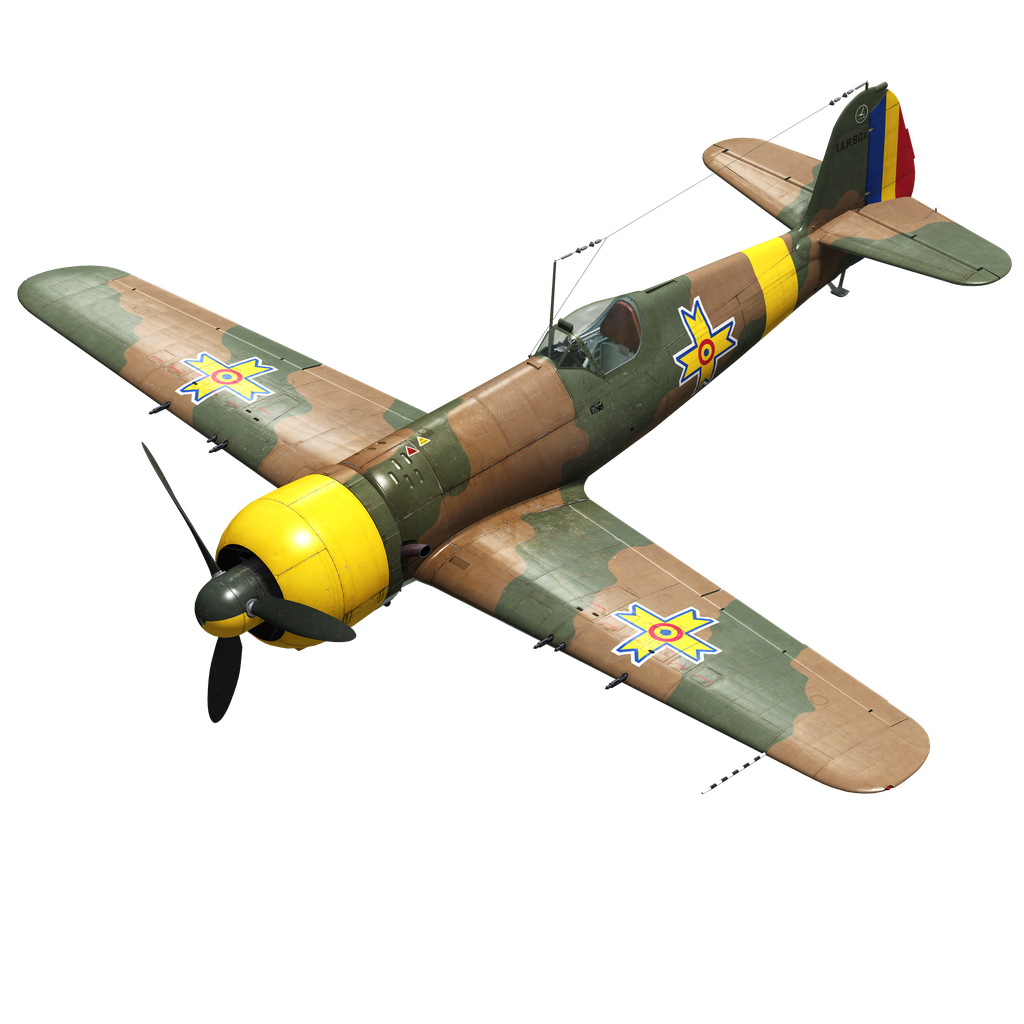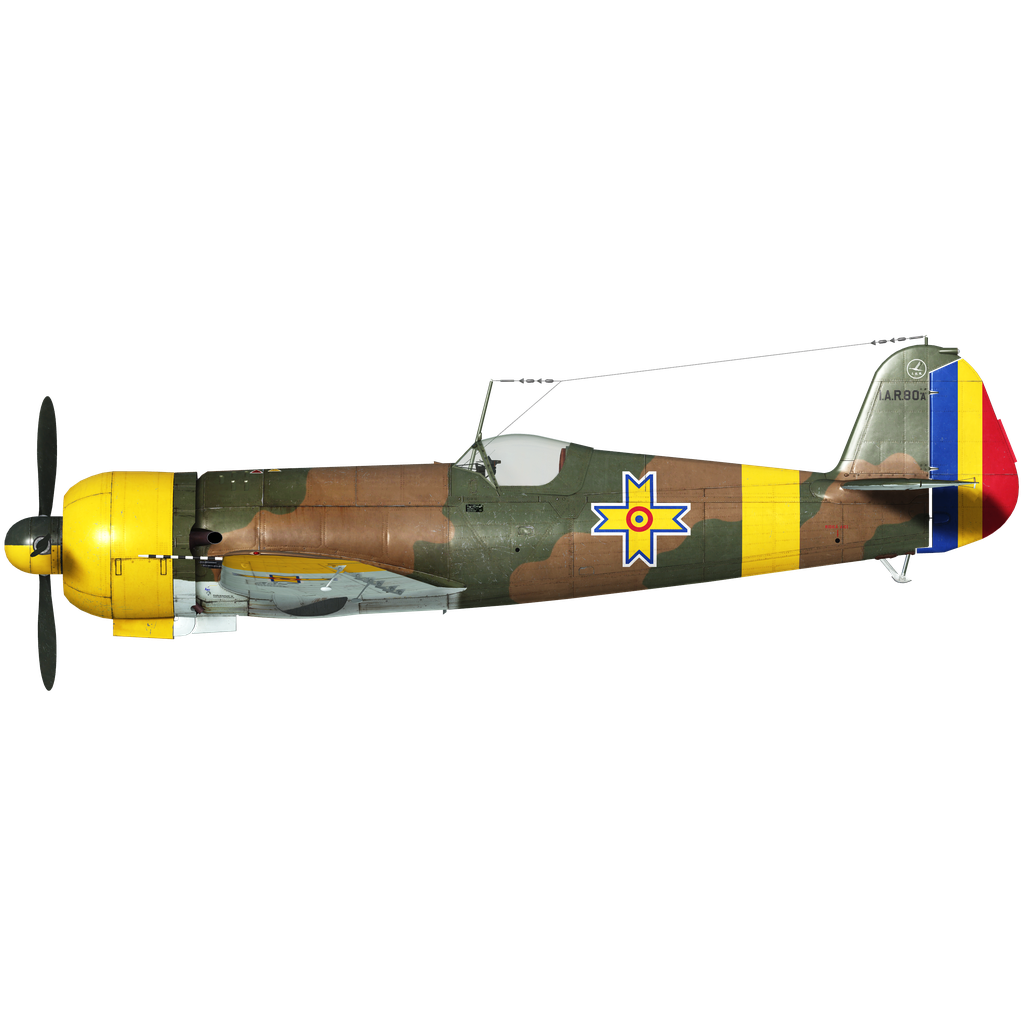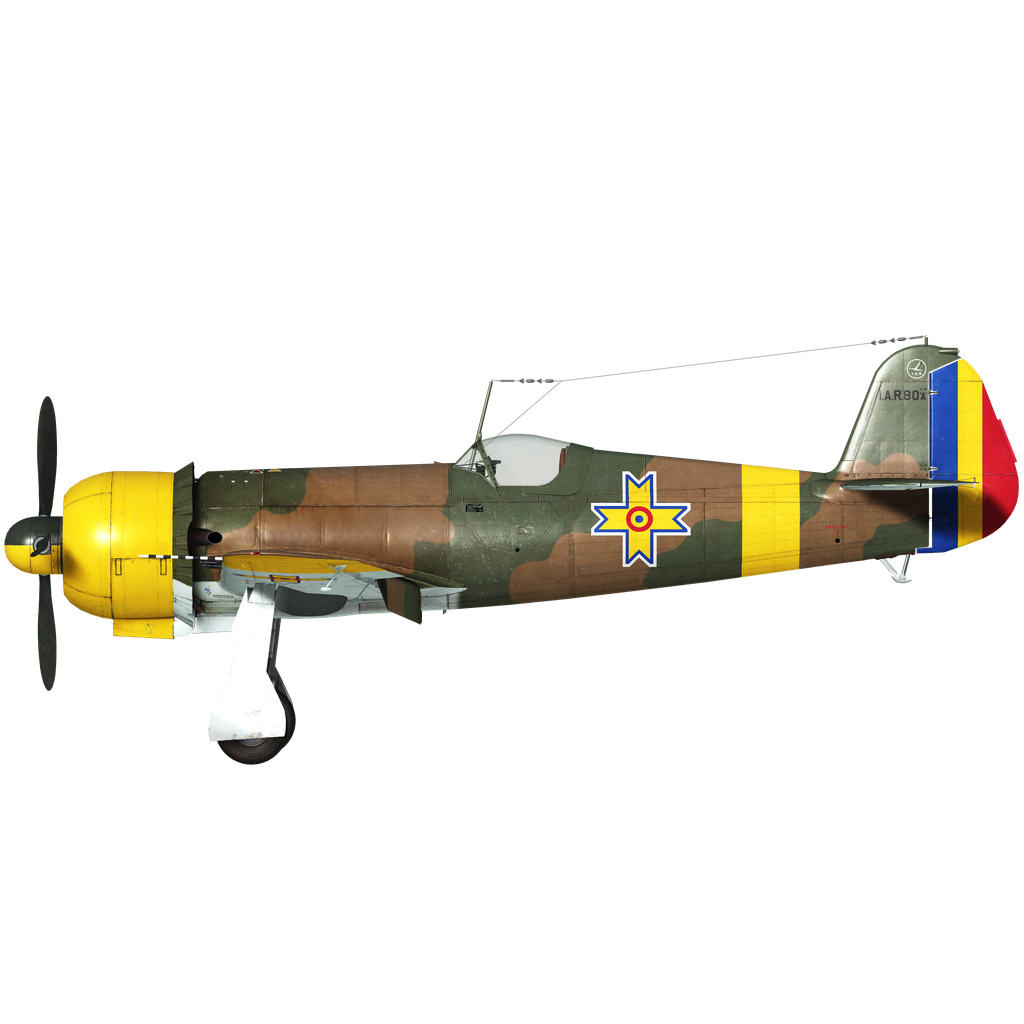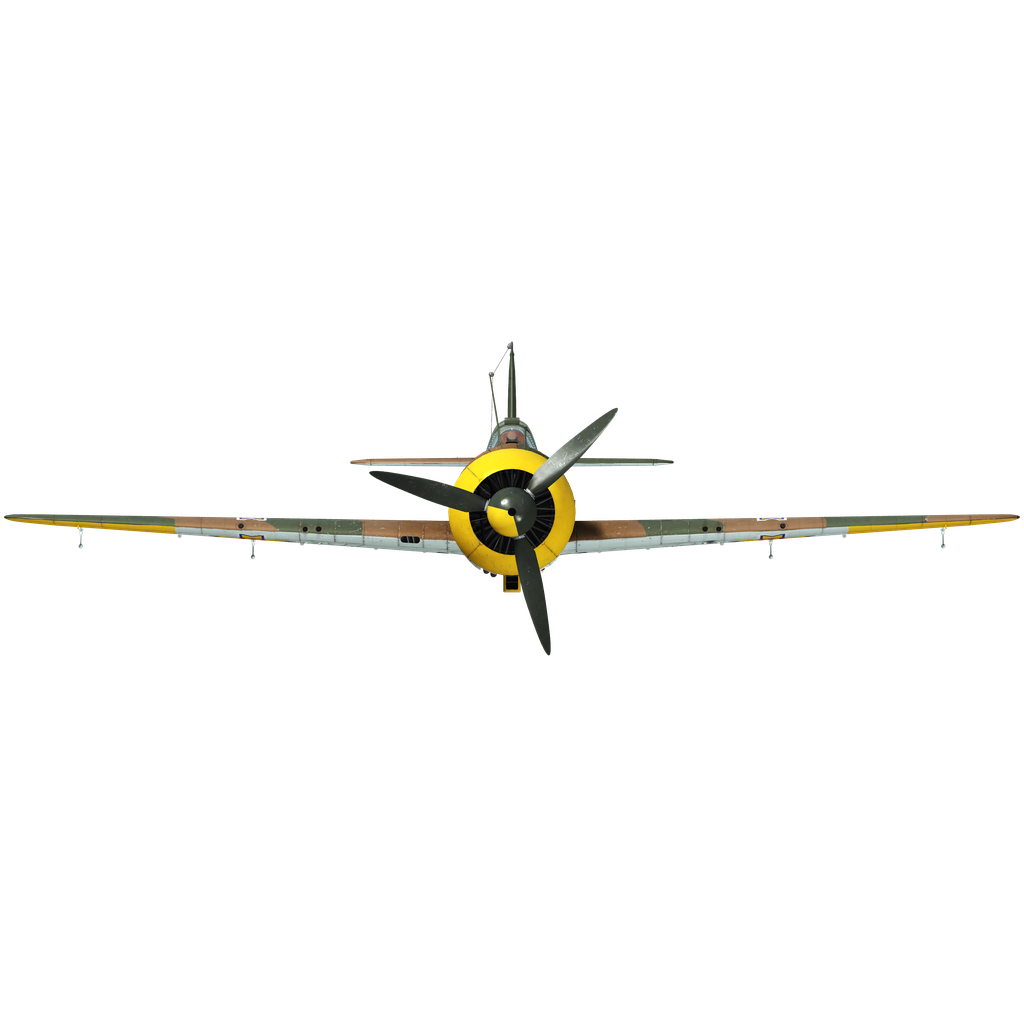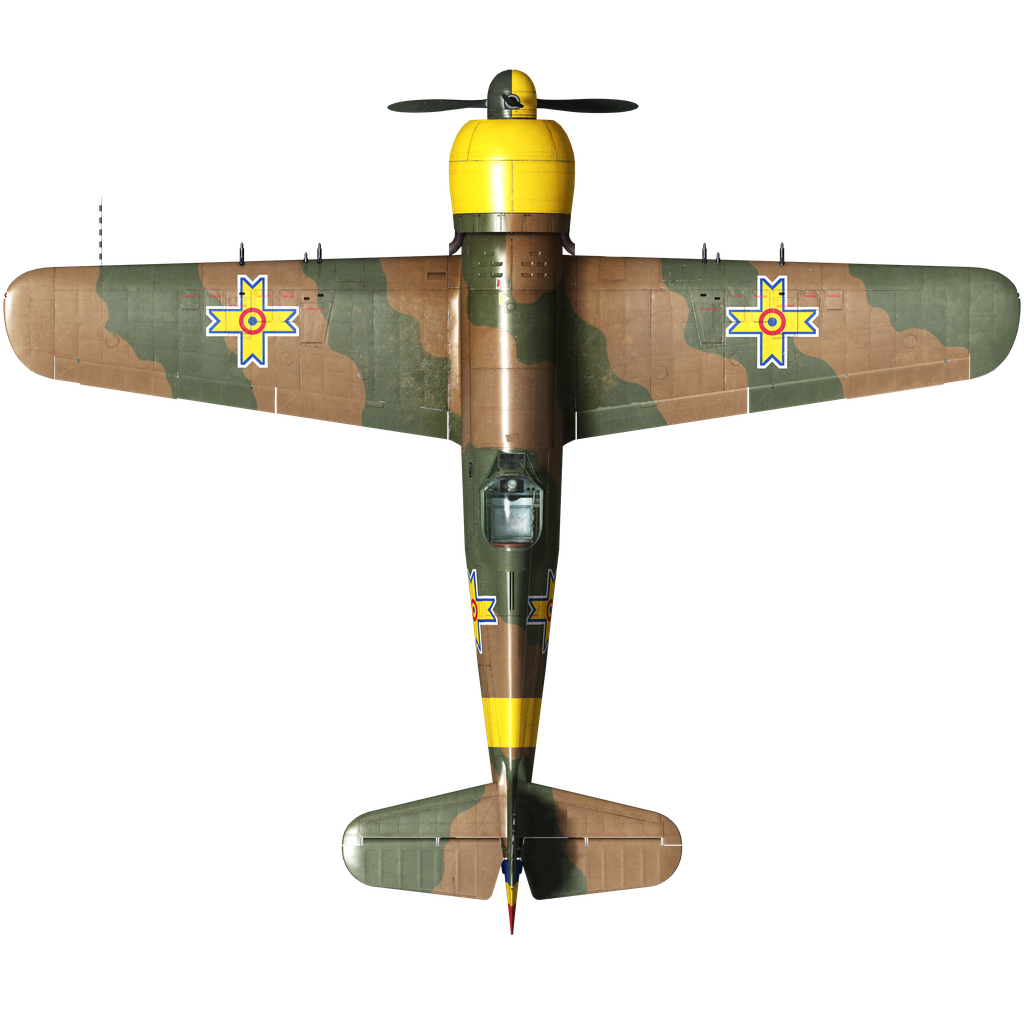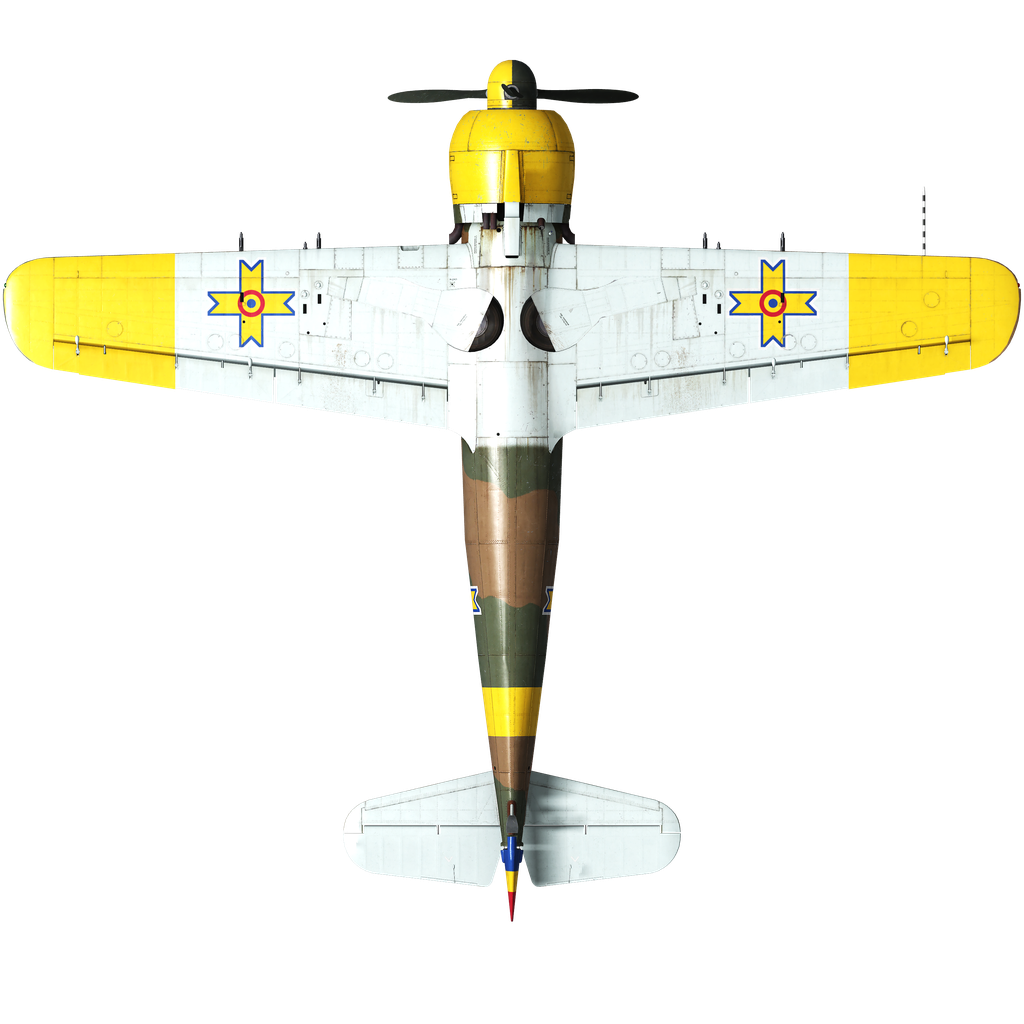In 1925, when an aircraft factory was built in Brasov with the help of French companies, Romania became a member of the countries producing aircraft. The history of this machine began with the purchase in Poland of a license for the PZL P.11f all-metal monoplane fighter. It was a gull-wing monoplane with non-retractable landing gear and an open cockpit. It was developed into the PZL P.24E fighter, which was built under license in Romania in 1937. The Romanian Air Force needed a more modern fighter, and in 1937 Romanian designers began developing such an aircraft to replace the Polish models. A prototype was built and flown in 1939, after which it went into serial production.
The IAR 80 was a single-seat high-speed monoplane with a low wing and retractable landing gear. The wing was an all-metal construction. The ailerons and flaps (hydraulically operated) had a canvas-covered tubular frame. The fuselage was of mixed construction. The forward section up to the cockpit was a trussed tubular frame, while the aft section was a classic semi-monocoque with structural members and stringers. The horizontal stabilizer had struts on the underside. The aircraft was equipped with a version of the French Gnome-Rhone "Mistral-Major" 900 hp engine produced under license in Romania and armed with four 7.92 mm Belgian FN Browning machine guns in the wing. The main disadvantage was the poor forward visibility due to the elongated fuselage forward section, especially dangerous during takeoff and landing. This was due to the placement of the fuel and oil tanks directly behind the engine, in front of the cockpit.
The IAR 80 design was modified during series production in response to operational experience and increased combat effectiveness. For example, the number of machine guns was increased from 4 to 6, and later a more powerful engine was installed — as a result, the fuselage of the first 95-series aircraft had to be reinforced with a Dural "belt" located just behind the cockpit (later the fuselage was modified).
The IAR 80 series 106-130 aircraft of 1941 were powered by the IAR-K14-1001A engine with a takeoff power of 1025 hp and a variable pitch propeller. The structure of the rear fuselage was reinforced with overlapping bands. As in the previous series, armored glass in the front part of the canopy, armor on the back of the pilot's seat, and a new sight were installed. As a result, the aircraft weight increased and maximum speed decreased. The armament consisted of six 7.92 mm machine guns and a bomb rack for 50 kg bombs was installed under the wing behind each landing gear strut. 25 aircraft of series 106-130 were delivered to the Air Force during the war against the Soviet Union. From 1943 all aircraft armed with six 7.92 mm machine guns were designated IAR 80A.
Romanian pilots trained together with German pilots for Operation Barbarossa. On the eve of the attack, the 8th Air Group (the equivalent of a Soviet air regiment, only with three squadrons) was moved to the border airfields and began combat missions on June 22, 1941. The 8th Air Group was then joined by the 7th Air Group, and as part of the 4th Air Fleet of the Air Force, the Romanian pilots ensured the advance of the 3rd and 4th Romanian Armies, first on the territory of Bessarabia and then in the Ukraine. Covering the Romanian units, the fighters participated in the Battle of Stalingrad, but from January 1943 all the planes were concentrated on the air defense of Bucharest and the area of Ploesti, protecting the oil fields from raids.
IAR 80As of various series were in service until 1944 when they were universally replaced by more modern models.
1. Radu Brinzan "Iar.80 and Iar.81: Airframe, Systems and Equipment" 2011
2. A. Haustov. "Made in Romania Fighter IAR 80". Journal "Aviation and Time" № 6, 2002.
3. Materials of the site airwar.ru
